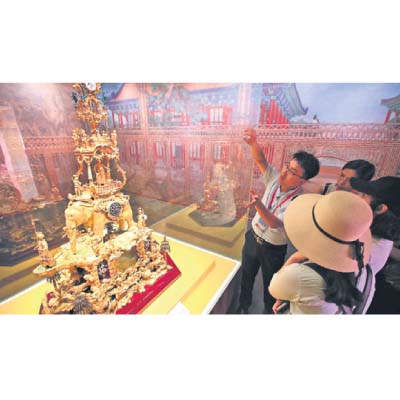Antique clocks, scientific instruments, enamel pieces and porcelain. Gifts for China’s emperors from olden days. Kept in a museum storehouse… until now.
In all, 219 such artifacts from the Palace Museum Collections are now on display in a newly refurbished neoclassical building in Xiamen, Fujian province.
Imperial treasures have found a temporary home in the newly-opened Kulangsu Gallery of Foreign Artefacts on posh Gulangyu Island, home to the affluent in China’s pre-communist past.
Gulangyu was recently insicribed as China’s 52nd Unesco World Heritage site.
The ongoing exhibition runs until May 2018. The royal artifacts came from more than 10 countries from the 16th century to the early 20th century.
The Kulangsu Gallery is the first satellite gallery of the Palace Museum outside Beijing. The museum reportedly has 13,000 foreign cultural relics in storage because it lacks permanent exhibition space.
The Palace Museum was home to China’s emperors from 1420 to 1911, covering the Ming (1368 -1644) and Qing (1644-1911) dynasties.
As such, it received many gifts from Western missionaries and diplomats during the imperial years. As well, many of the emperors were said to have been fond of buying artifacts from abroad.
Xiamen is an important stop for traders along China’s maritime silk road. Kulangsu Gallery is formerly the Hope Hospital, built by American missionary and doctor John Abraham Ottel in 1898.
It was the first modern hospital in southern Fujian. Its 2,800 sqm exhibition space was converted from former hospital wards.
China’s museums get 900M visitors yearly
Each year, some 900 million visitors go to 30,000 exhibitions in China’s museums, says the State Administration of Cultural Heritage recently. There were 4,873 registered museums in the country as of the end of 2016, of which 4,246, or 87.1 percent, offer free admission. There are 1,297 private museums, accounting for 26.6 percent of the country’s total.
